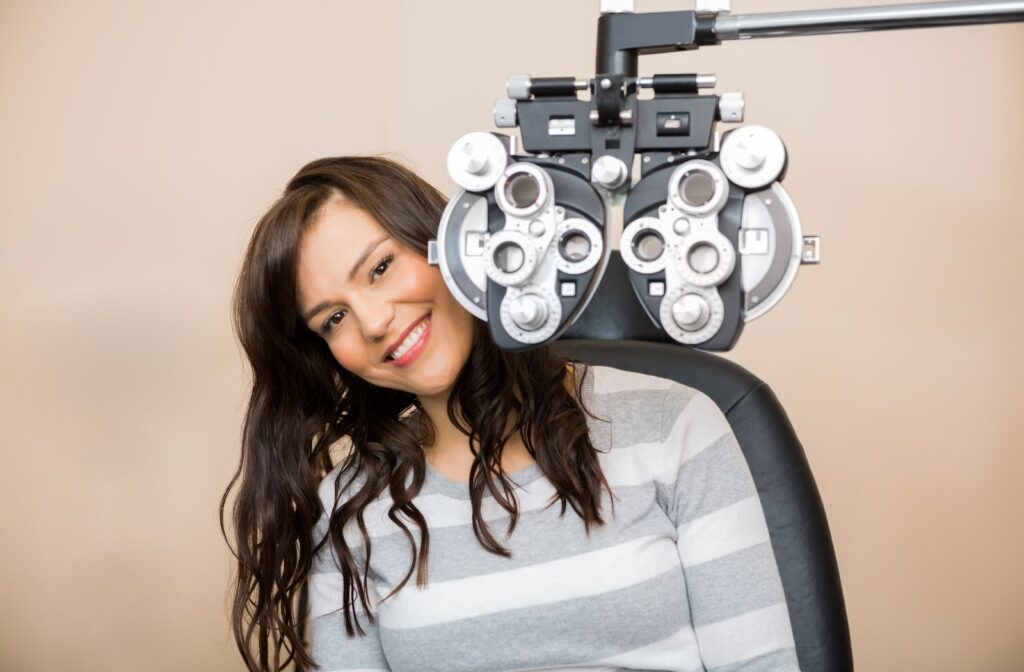All Categories
Featured
Table of Contents

Normal eye exams are necessary for preserving great vision and discovering prospective eye health and wellness problems early. The frequency of these tests can vary significantly based on a person's age, lifestyle, and total health and wellness. Comprehending the recommended schedule for eye tests can help ensure that individuals of all ages obtain ideal treatment and monitoring for their eye health.
Newborns and Toddlers (0-2 Years)
For babies and toddlers, eye examinations are vital for identifying any prospective vision issues early on. The American Academy of Ophthalmology suggests that a kid's very first eye examination must happen at around six months old. During this preliminary browse through, the eye treatment expert will certainly evaluate the youngster's aesthetic advancement and check for any type of obvious eye issues.Following this initial examination, it is recommended that kids have one more eye test at age 3. This check out will certainly concentrate on assessing the kid's total visual function, consisting of eye placement and the ability to track objects. If no concerns are detected, the next test ought to be scheduled before the kid starts college, typically around age 5 or 6.
School-Aged Kids (6-18 Years)
Once kids get to institution age, regular eye examinations need to be arranged every one to two years. Vision is critical for learning and advancement, and lots of institutions carry out vision testings. However, these screenings do not change a detailed eye test by an eye care professional.For children associated with sporting activities or tasks calling for significant visual emphasis, annual eye examinations may be advisable. In addition, if a youngster displays indicators of vision problems-- such as problem reviewing, squinting, or frequent frustrations-- a browse through to the eye physician need to be scheduled as quickly as feasible.
Youthful Grownups (19-39 Years)
Young grownups normally have fewer vision changes than older age, however normal eye tests continue to be essential. The general referral is to arrange an eye test every 2 years throughout this period. Individuals with particular threat aspects-- such as a family background of eye disease, diabetes mellitus, or those who use get in touch with lenses-- must consider annual eye tests.Additionally, those that spend substantial time on electronic gadgets might experience digital eye strain. If symptoms such as dry skin, tiredness, or blurred vision occur, it might be smart to see an eye care expert faster.
Grownups (40-64 Years)
As individuals get in midlife, the possibility of creating vision troubles rises. Adults aged 40 to 64 need to set up eye examinations each to 2 years. This age may start to experience presbyopia, an all-natural age-related problem that makes it challenging to focus on close things. Eye tests can additionally aid spot various other common age-related problems such as glaucoma, cataracts, and macular degeneration.If individuals in this age have threat factors like hypertension or diabetic issues, they may call for more regular examinations to check their eye health very closely.
Senior Citizens (65 Years and Older)
For seniors, routine eye tests come to be also more vital. The American Optometric Organization recommends that people matured 65 and older have an eye test at the very least as soon as a year.Verdict.
Understanding the proper routine for eye tests based upon age is vital for preserving optimum eye wellness throughout life. From babies to elders, regular eye evaluations play a vital duty in identifying problems early and ensuring that vision remains sharp. By sticking to these guidelines and talking to an eye treatment specialist, individuals can take positive steps towards maintaining their vision and total wellness. Whether it's a child's initial visit or an elderly's annual examination, prioritizing eye care is a financial investment in lifelong health.Table of Contents
Latest Posts
Experience the Boogaloo: Eating, Drinks, & Sports at FunCity Hotel
Published en
2 min read
The Boogaloo Sports Bar & Grill at FunCity Resort Resort: Where Enjoyable Fulfills Flavor
Published en
2 min read
Experience the Boogaloo: Eating, Drinks, & Sports at FunCity Hotel
Published en
2 min read
More
Latest Posts
Experience the Boogaloo: Eating, Drinks, & Sports at FunCity Hotel
Published Feb 03, 25
2 min read
The Boogaloo Sports Bar & Grill at FunCity Resort Resort: Where Enjoyable Fulfills Flavor
Published Jan 31, 25
2 min read
Experience the Boogaloo: Eating, Drinks, & Sports at FunCity Hotel
Published Jan 23, 25
2 min read